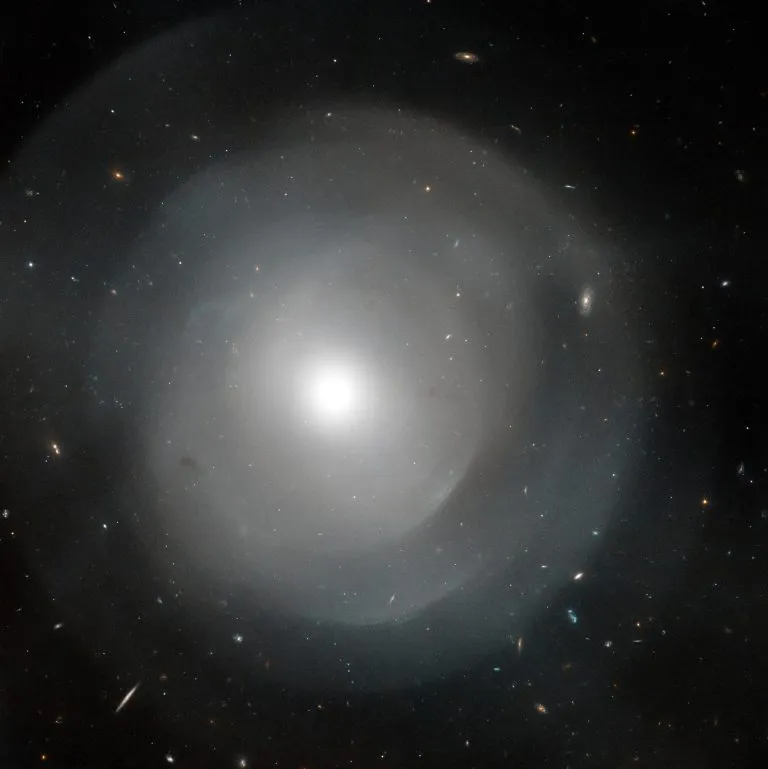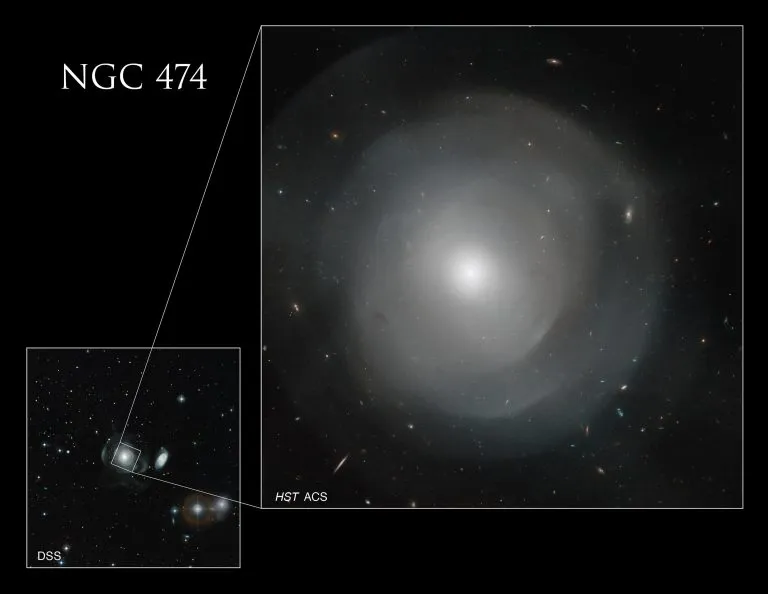NASA has released a new Hubble Space Telescope image that captured the central region of the giant elliptical galaxy NGC 474 NGC 474 is about 100 million light-years away from the earth and spans about 250000 light-years - 2.5 times larger than our Milky Way galaxy. It is a huge galaxy.

In addition to its huge volume, NGC 474 has a series of complex layered "shells" surrounding its spherical core. The origin of these "shells" is unclear, but astronomers speculate that they may be the result of the huge galaxy absorbing one or more smaller galaxies. Just as a pebble falling into the water will produce ripples in the pond, the absorbed galaxy will produce waves and form a "shell".

About 10% of elliptical galaxies have "shell" structure, but unlike most elliptical galaxies, they are related to galaxy clusters. Elliptical galaxies with "shell" are usually located in relatively empty space. This may be that they devoured their "neighbors".
This image was created using data from the Hubble advanced observation camera. Hubble's wide area and Planetary Camera 2 and wide area camera 3 provide additional data to fill the gap. Blue represents visible blue light, while orange represents near-infrared light outside the range of human vision.